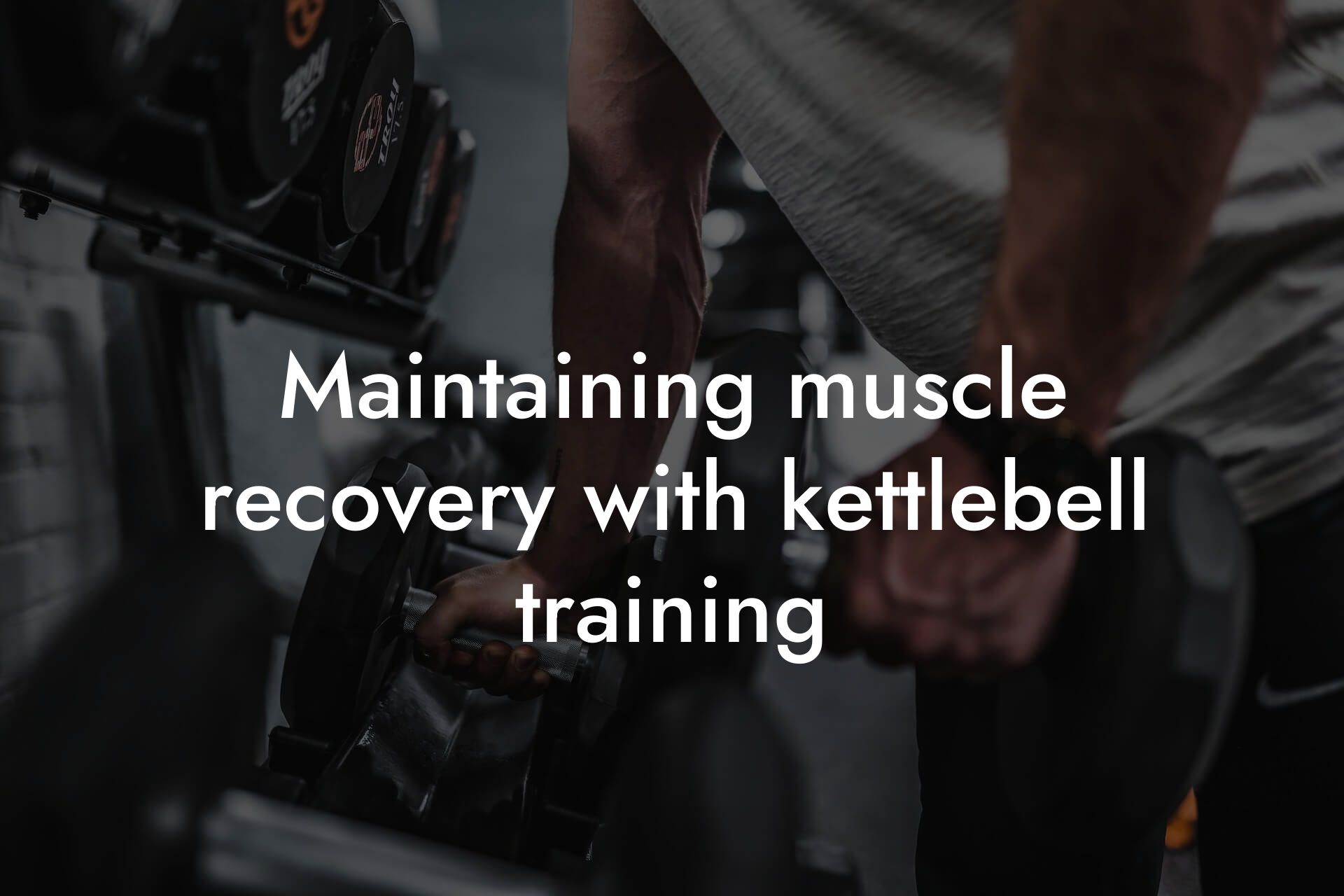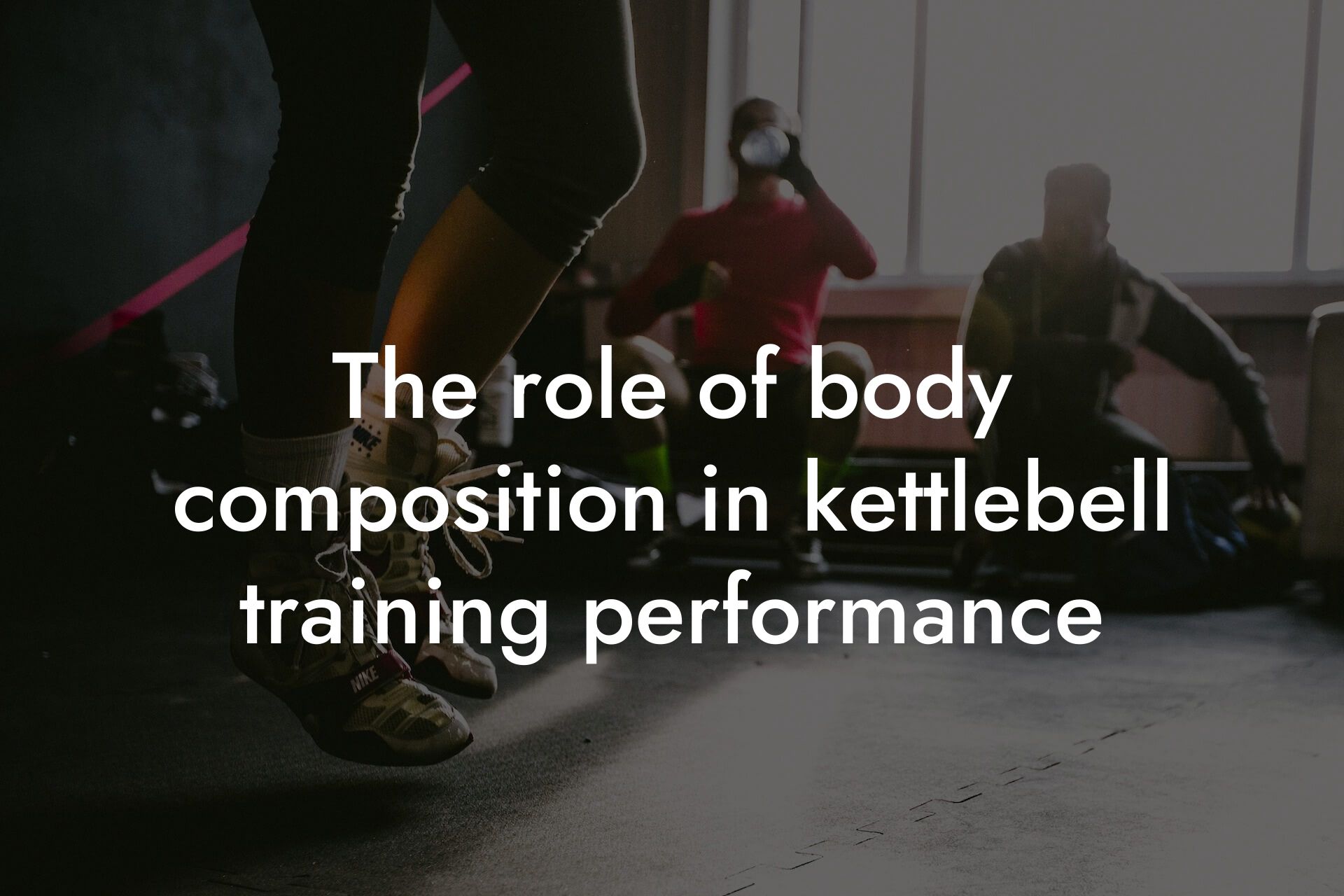As a high-earning professional, you understand the importance of maintaining a strong and healthy physique. Not only does it boost your confidence, but it also enhances your overall well-being and performance in the workplace. One effective way to achieve this is through kettlebell training, a form of exercise that focuses on building functional strength. In this article, we'll delve into the world of kettlebell training and explore how it can help you improve your functional strength, physique, and overall health.
Table of Contents
What is Functional Strength?
Functional strength refers to the strength and power you need to perform daily tasks and activities with ease. It's the ability to generate force, move efficiently, and maintain good posture, which is essential for everyday life and athletic performance. Unlike traditional weightlifting, which often focuses on isolating specific muscle groups, functional strength training involves exercises that work multiple joints and muscle groups simultaneously. This approach helps improve coordination, balance, and overall athleticism.
Benefits of Kettlebell Training
Kettlebell training offers a range of benefits that make it an ideal choice for improving functional strength. Some of the key advantages include:
• Full-body workout: Kettlebells work multiple muscle groups simultaneously, engaging your entire body and improving overall strength and coordination.
• Improved power and explosiveness: Kettlebell exercises, such as the swing and clean, help develop power and explosiveness, which are essential for athletic performance and everyday activities.
• Increased mobility and flexibility: Kettlebell training involves dynamic movements that help improve your range of motion, flexibility, and mobility.
• Enhanced core strength: Kettlebells require engagement of your core muscles, which helps improve your overall core strength and stability.
• Time-efficient: Kettlebell workouts can be completed in a short amount of time, making them an ideal choice for busy professionals.
Key Kettlebell Exercises for Functional Strength
When it comes to improving functional strength with kettlebell training, there are several exercises that stand out from the rest. These include:
• The Swing: The swing is a fundamental kettlebell exercise that works your hips, glutes, and lower back. It helps improve power, explosiveness, and coordination.
• The Clean and Press: This exercise works your entire body, engaging your legs, core, and upper body. It helps improve strength, power, and overall athleticism.
• The Goblet Squat: The goblet squat is a variation of the traditional squat that involves holding a kettlebell at your chest. It helps improve strength, balance, and coordination.
• The Turkish Get-Up: This exercise is a great way to improve your overall strength, mobility, and coordination. It involves lying on your back, holding a kettlebell, and getting up to a standing position.
Programming and Progressions
When it comes to programming and progressions, it's essential to start with exercises that are challenging yet manageable. As you get stronger and more comfortable with the movements, you can increase the weight, reps, or sets to continue challenging yourself. Some tips to keep in mind include:
• Start with lighter weights: Begin with lighter weights and focus on proper form and technique. As you get stronger, you can gradually increase the weight.
• Increase reps and sets: To continue challenging yourself, increase the number of reps and sets as you get stronger.
• Change exercises: As you master certain exercises, change them up to continue challenging yourself and avoiding plateaus.
Common Mistakes to Avoid
When it comes to kettlebell training, there are several common mistakes to avoid. These include:
• Poor form and technique: Make sure to focus on proper form and technique to avoid injury and get the most out of your workout.
• Using too much weight: Start with lighter weights and gradually increase them as you get stronger. Using too much weight can lead to poor form and injury.
• Not warming up: Always warm up before your workout to prevent injury and prepare your muscles for the exercises ahead.
Integrating Kettlebell Training with DEXA Scanning
At Tano Performance Group, we understand the importance of tracking your progress and making data-driven decisions. That's why we recommend integrating kettlebell training with DEXA scanning. Our state-of-the-art DEXA machine provides a comprehensive body assessment, giving you valuable insights into your body composition, bone density, and overall health. By combining kettlebell training with DEXA scanning, you can:
• Track your progress: Monitor your changes in body composition, bone density, and overall health to see the impact of kettlebell training on your body.
• Make data-driven decisions: Use the data from your DEXA scan to adjust your training program, nutrition, and lifestyle to optimize your results.
• Optimize your training: Use the insights from your DEXA scan to identify areas for improvement and optimize your training program for better results.
In conclusion, kettlebell training is a highly effective way to improve functional strength, physique, and overall health. By incorporating kettlebell exercises into your workout routine, you can enhance your power, explosiveness, and coordination, while also improving your overall athleticism. Remember to start with lighter weights, focus on proper form and technique, and gradually increase the intensity as you get stronger. By integrating kettlebell training with DEXA scanning, you can track your progress, make data-driven decisions, and optimize your training for better results. Take the first step towards achieving your fitness goals today and start incorporating kettlebell training into your workout routine.
Frequently Asked Questions
What is functional strength and why is it important?
Functional strength refers to the strength and ability to perform daily tasks and activities with ease and efficiency. It is important because it helps improve overall fitness, increases mobility, and reduces the risk of injury. Functional strength training, such as kettlebell training, focuses on exercises that mimic real-life movements, making it an effective way to improve overall physical fitness.
What are kettlebells and how do they differ from traditional weights?
Kettlebells are weighted balls with a handle, typically made of iron or steel. They differ from traditional weights in that they allow for a wider range of motion and require more stabilization and control, engaging multiple muscle groups at once. This makes kettlebell training an effective way to improve functional strength, power, and endurance.
What are the benefits of kettlebell training for functional strength?
Kettlebell training offers several benefits for functional strength, including improved power, speed, and endurance. It also increases strength, mobility, and flexibility, while reducing the risk of injury. Additionally, kettlebell training can improve balance, coordination, and overall athleticism.
How does kettlebell training improve functional strength?
Kettlebell training improves functional strength by engaging multiple muscle groups at once, mimicking real-life movements and activities. This helps to build strength, power, and endurance, while also improving coordination, balance, and overall athleticism.
What are some examples of kettlebell exercises that improve functional strength?
Examples of kettlebell exercises that improve functional strength include the kettlebell swing, goblet squat, single-arm row, and Turkish get-up. These exercises engage multiple muscle groups, improve power, speed, and endurance, and mimic real-life movements and activities.
Can kettlebell training be adapted for different fitness levels?
Yes, kettlebell training can be adapted for different fitness levels. Beginners can start with lighter weights and progress to heavier weights as they build strength and endurance. More advanced individuals can increase the weight, intensity, and complexity of exercises to continue challenging themselves.
How often should I train with kettlebells to see improvements in functional strength?
It's recommended to train with kettlebells 2-3 times per week, with at least one day of rest in between. This allows for adequate recovery time and helps to prevent overtraining and injury. Consistency and patience are key when it comes to seeing improvements in functional strength.
Can kettlebell training be done at home or do I need to join a gym?
Kettlebell training can be done at home with a minimal investment in equipment. All you need is a kettlebell and a small amount of space to move around. This makes it a convenient and cost-effective way to improve functional strength.
Do I need to have prior experience with weightlifting or strength training to start kettlebell training?
No, prior experience with weightlifting or strength training is not necessary to start kettlebell training. However, it's recommended to start with lighter weights and progress gradually to avoid injury. It's also helpful to work with a qualified trainer or instructor to learn proper form and technique.
How long does it take to see improvements in functional strength with kettlebell training?
Improvements in functional strength with kettlebell training can be seen in as little as 4-6 weeks, depending on consistency and intensity of training. However, significant improvements may take several months to a year or more to achieve.
Can kettlebell training be used for weight loss or fat loss?
Yes, kettlebell training can be an effective way to lose weight or fat. The high-intensity nature of kettlebell exercises can help increase metabolism and burn calories, while also building muscle mass, which can further boost metabolism.
How does kettlebell training compare to other forms of strength training, such as weightlifting or bodyweight exercises?
Kettlebell training offers a unique combination of strength, power, and endurance training that can be more effective than traditional weightlifting or bodyweight exercises for improving functional strength. However, a well-rounded fitness program may include a combination of different training methods.
Can kettlebell training be used for rehabilitation or injury prevention?
Yes, kettlebell training can be used for rehabilitation or injury prevention. The low-impact nature of kettlebell exercises can be easier on the joints than high-impact activities, making it an effective way to improve strength and mobility while reducing the risk of injury.
How does kettlebell training affect bone density?
Kettlebell training can help improve bone density by engaging in weight-bearing exercises that stimulate bone growth and density. This can be especially beneficial for individuals at risk of osteoporosis or osteopenia.
Can kettlebell training be used for athletic performance or sports training?
Yes, kettlebell training can be an effective way to improve athletic performance or sports training. The power, speed, and endurance developed through kettlebell training can translate to improved performance in a variety of sports and activities.
How does kettlebell training affect body composition?
Kettlebell training can help improve body composition by building muscle mass and increasing metabolism, which can lead to a reduction in body fat percentage. This can result in a more toned and athletic physique.
Can kettlebell training be used for overall fitness and wellness?
Yes, kettlebell training can be an effective way to improve overall fitness and wellness. The combination of strength, power, and endurance training can help improve overall physical fitness, while also reducing stress and improving mental well-being.
How does kettlebell training compare to other forms of exercise, such as cardio or yoga?
Kettlebell training offers a unique combination of strength, power, and endurance training that can be more effective than cardio or yoga for improving functional strength. However, a well-rounded fitness program may include a combination of different exercise methods.
Can kettlebell training be modified for different ages or fitness levels?
Yes, kettlebell training can be modified for different ages or fitness levels. Exercises can be adapted to accommodate physical limitations or mobility issues, making it an accessible form of exercise for a wide range of individuals.
How does kettlebell training affect mental toughness and discipline?
Kettlebell training can help improve mental toughness and discipline by pushing individuals outside of their comfort zone and challenging them to overcome physical and mental obstacles.
Can kettlebell training be used for stress relief or relaxation?
Yes, kettlebell training can be an effective way to relieve stress and promote relaxation. The physical activity can help reduce stress and anxiety, while the sense of accomplishment and self-improvement can boost mood and overall well-being.
How does kettlebell training fit into a busy schedule?
Kettlebell training can be adapted to fit into a busy schedule. Exercises can be done in short intervals, and workouts can be modified to accommodate time constraints, making it a convenient and effective way to improve functional strength.
Here are some related articles you might love...
- Maintaining muscle recovery with kettlebell training
- The role of body composition in kettlebell training performance
- Reducing body fat for better kettlebell workout results
- The importance of bone density in kettlebell fitness
- Nutrition strategies for kettlebell enthusiasts
- Strength training tips specific to kettlebell exercises
- Balancing strength, speed, and flexibility in kettlebell workouts
- How DEXA scans can benefit kettlebell training athletes
Zak Faulkner
Zak Faulkner is a leading authority in the realm of physical health and body composition analysis, with over 15 years of experience helping professionals optimise their fitness and well-being. As one the experts behind Tano Performance Group, Zak has dedicated his career to providing in-depth, science-backed insights that empower clients to elevate their physical performance and overall health.
With extensive knowledge of DEXA technology, Zak specializes in delivering comprehensive body assessments that offer precise data on body fat, muscle mass, bone density, and overall physique. His expertise enables individuals to make informed decisions and achieve their fitness goals with accuracy and confidence. Zak’s approach is rooted in a deep understanding of human physiology, combined with a passion for helping clients unlock their full potential through personalised strategies.
Over the years, Zak has earned a reputation for his commitment to excellence, precision, and client-focused service. His guidance is trusted by top professionals who demand the best when it comes to their health. Whether advising on fitness programs, nutritional strategies, or long-term wellness plans, Zak Faulkner’s insights are a valuable resource for anyone serious about taking their health and fitness to the next level.
At Tano Performance Group, Zak continues to lead our Content Team revolutionising how professionals approach their physical health, offering unparalleled expertise that drives real results.




